The Great Wall of China, a UNESCO World Heritage Site, is one of the world’s most iconic landmarks. Stretching over 21,000 km, this ancient defensive marvel was built to protect China from invasions. Today, it symbolizes China’s rich history and cultural resilience. With its breathtaking views along rugged mountains, it offers visitors a glimpse into China’s past while standing as a testament to human engineering. A must-see for its historical significance and stunning scenery.
The Great Wall Facts
| Category | Details | Category | Details |
|---|---|---|---|
| Chinese Name | 长城 (Chángchéng /channg-chnng/ ‘Long Wall’) | Another name | 万里长城 (Wàn-Lǐ Chángchéng /wann-lee channg-chnng/ ‘Ten-Thousand-Li-Long Wall’, i.e. ‘the 5,000-Kilometer-Long Wall’) |
| Length | 21,196.18 km | Construction Period | From 7th century BC to Ming Dynasty (14th-17th century) |
| Main Purpose | Defense and Border Control | Construction Materials | Rammed earth, bricks, stones, wood |
| Location | Northern China | Famous Sections | Badaling, Mutianyu, Jiayuguan, Simatai, Jinshanling |
| World Heritage Status | UNESCO World Heritage Site since 1987 | Tourism Attraction | One of the most visited sites in China |
| Notable Gates | Jiayu Pass, Shanhai Pass, Juyong Pass | End Points | East: Shanhaiguan, West: Jiayuguan |
| Notable Architectural Feature | Zig-zagging along mountain ridges for strategic defense | Condition | Some parts well-preserved, others deteriorating |
Top 7 Most Popular Sections of Great Wall
Many people mistakenly believe that the Great Wall of China is a single, unbroken structure. In reality, it is a defensive system made up of walls, fortresses, watchtowers, and passes, with some sections connected by natural barriers like steep mountains and rivers. The wall was built in segments over different dynasties, rather than as one continuous line.
The Great Wall stretches across more than 15 provinces, municipalities, and autonomous regions, including Shandong, Henan, Hebei, Inner Mongolia, Shanxi, Shaanxi, Gansu, Liaoning, Ningxia, and Beijing. Based on factors like scenery, accessibility, and tourist facilities, the following seven sections are the most popular among visitors: Badaling, Mutianyu, Simatai, huanghuacheng, Jinshanling, Juyongguan and Jiankou.
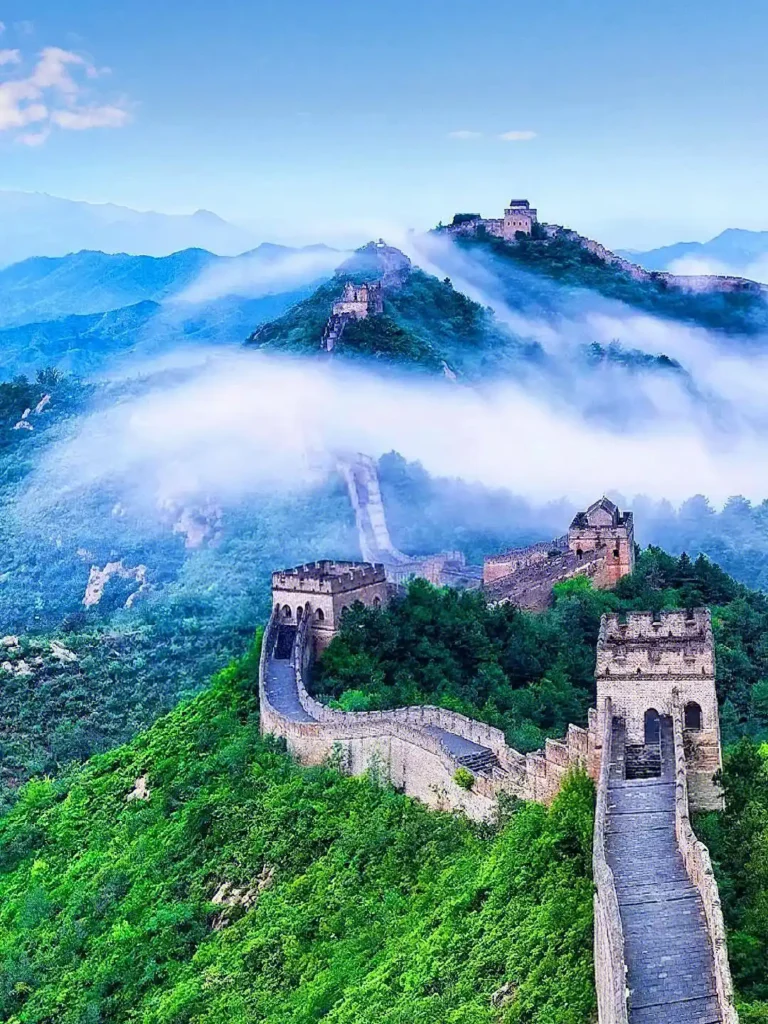
Badaling
Badaling, the most iconic section of the Great Wall, is located near Beijing. As a key military defense point in ancient times, it best represents the Great Wall’s grandeur. Recognized as a cultural heritage site, it remains a must-see attraction.
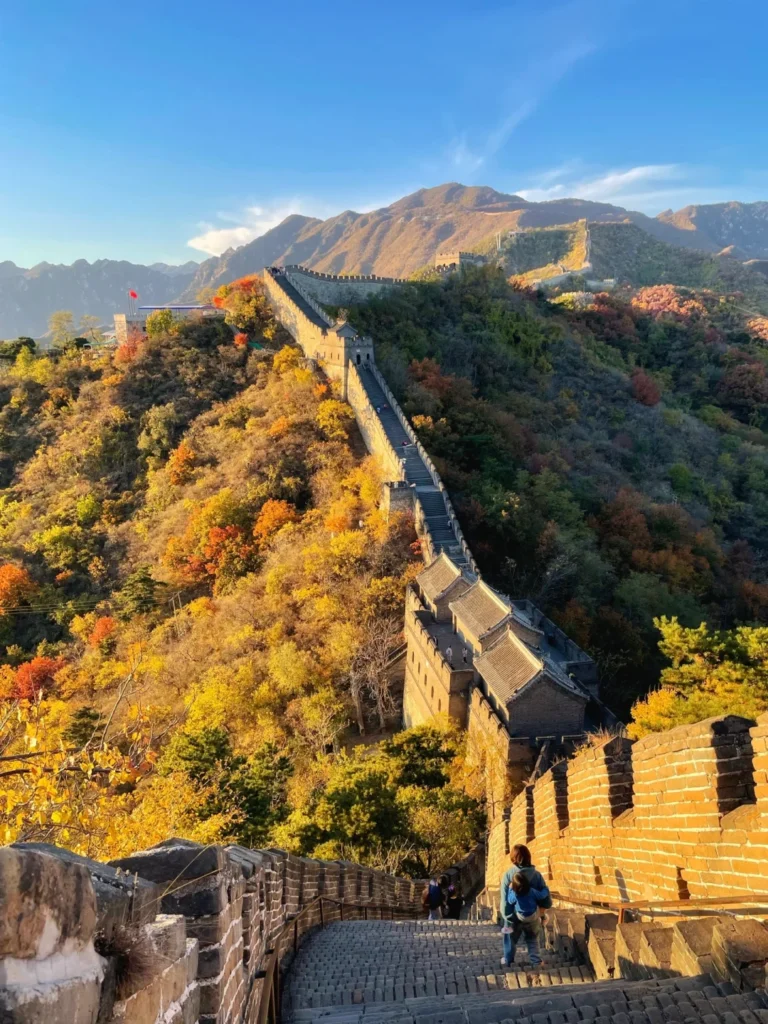
Mutianyu
Mutianyu is a beautifully preserved Ming Dynasty section famous for its scenic views and watchtowers. Popular with foreign visitors, it offers cable cars and toboggans for easy access. Once a key military defense point (“Strong Fortress of Beijing”), it now provides a perfect Great Wall experience for all ages.
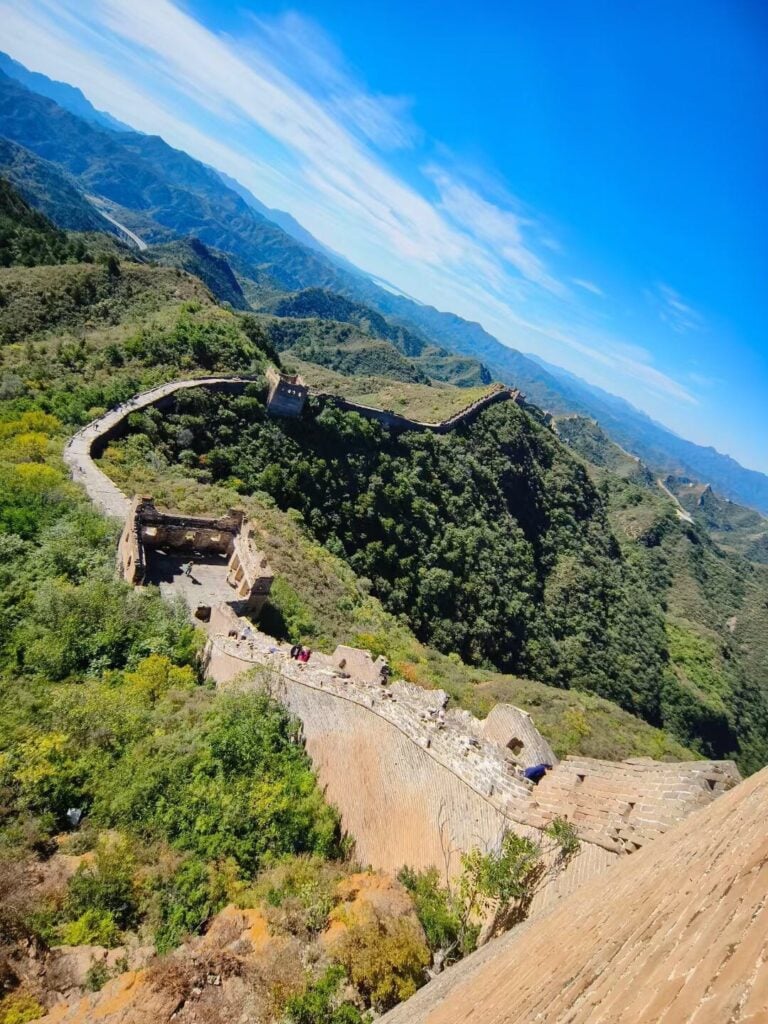
Mutianyu
Jinshanling, one of the most scenic Great Wall sections, is famed for its well-preserved watchtowers and stunning landscapes. Perfect for hiking and photography, this 10.5km stretch showcases remarkable Ming Dynasty military architecture with densely spaced towers.
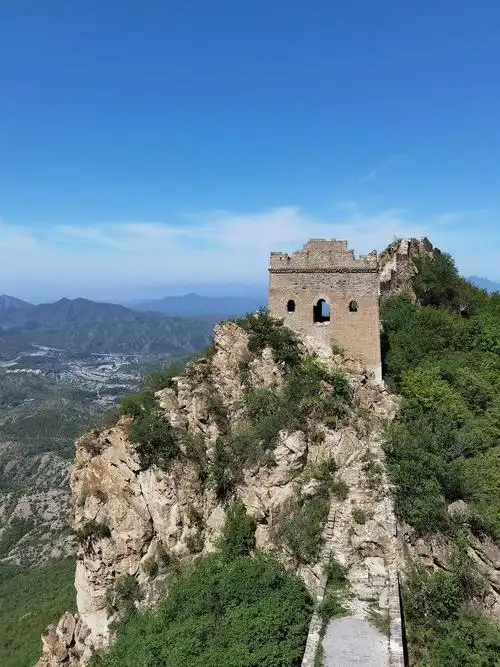
Simatai
Simatai Great Wall, a 2-hour drive from Beijing, is the only section preserving original Ming Dynasty features. Recognized by UNESCO for its “wild Great Wall” status, it offers rugged terrain and unique night views illuminated alongside Gubei Water Town, creating unforgettable experiences.
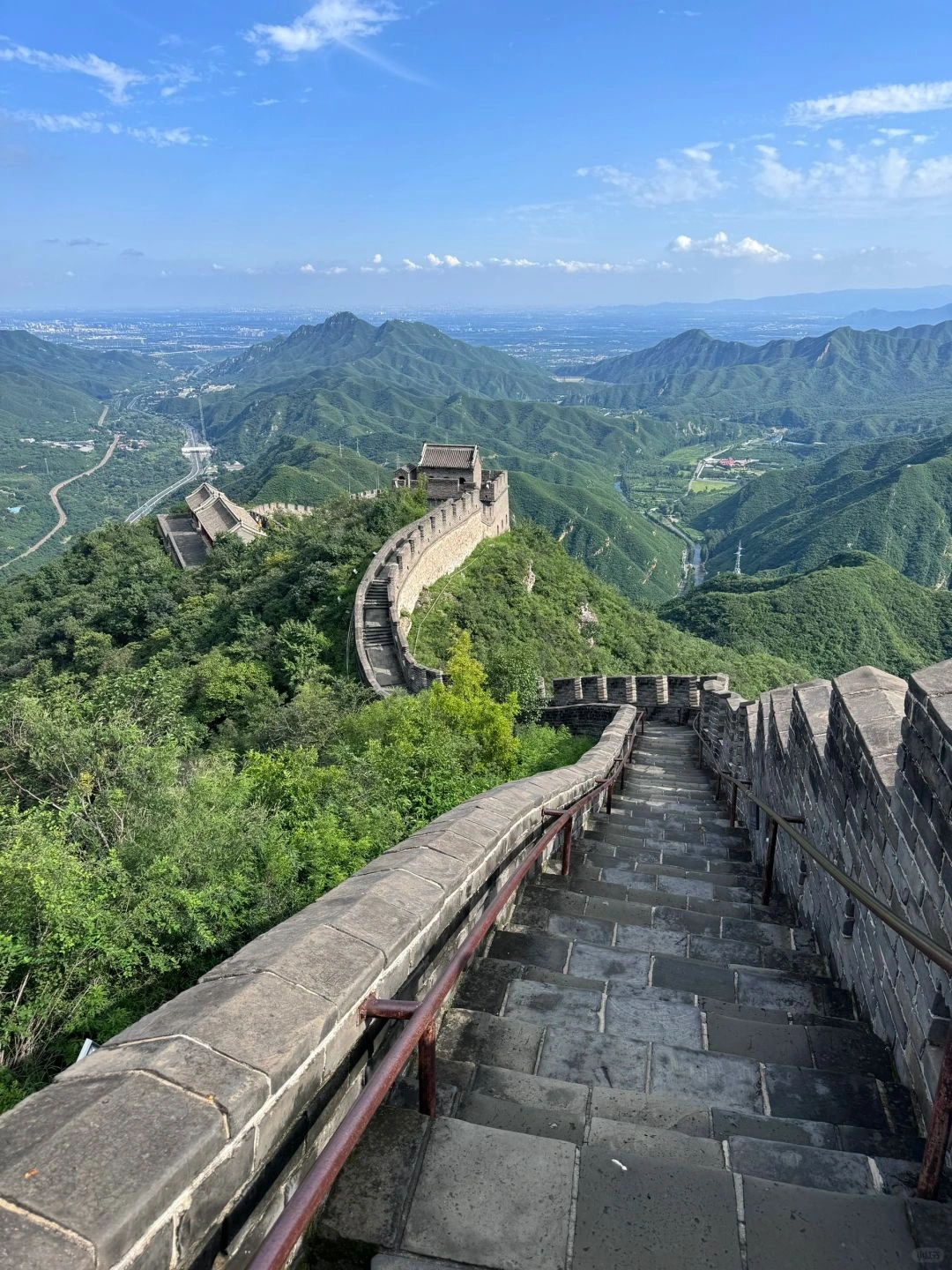
Juyongguan
Juyongguan, one of China’s three renowned Great Wall passes, serves as Beijing’s northern gateway. This 1,000-year-old fortress features a unique circular design enclosing temples, 14 watchtowers, and exquisite carvings. Less crowded, it offers both scenic hikes and cultural discovery.
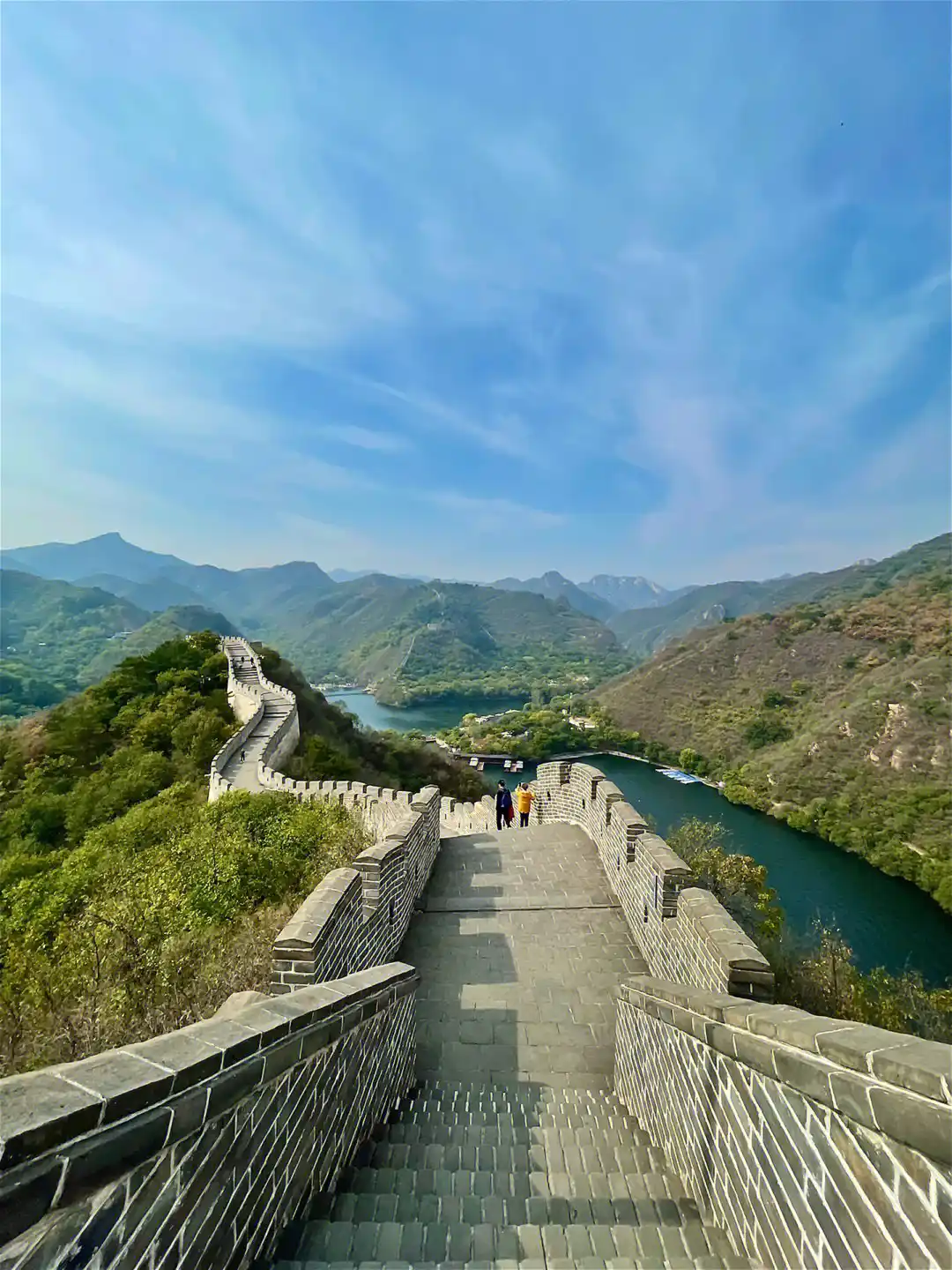
Juyongguan
Huanghuacheng, 80km from Beijing, is the only lakeside Great Wall section, featuring unique underwater ruins. Perfect for hiking, it blends northern grandeur with southern charm. Visitors enjoy boating, a glass bridge, and an 800-year-old chestnut tree, offering diverse experiences.
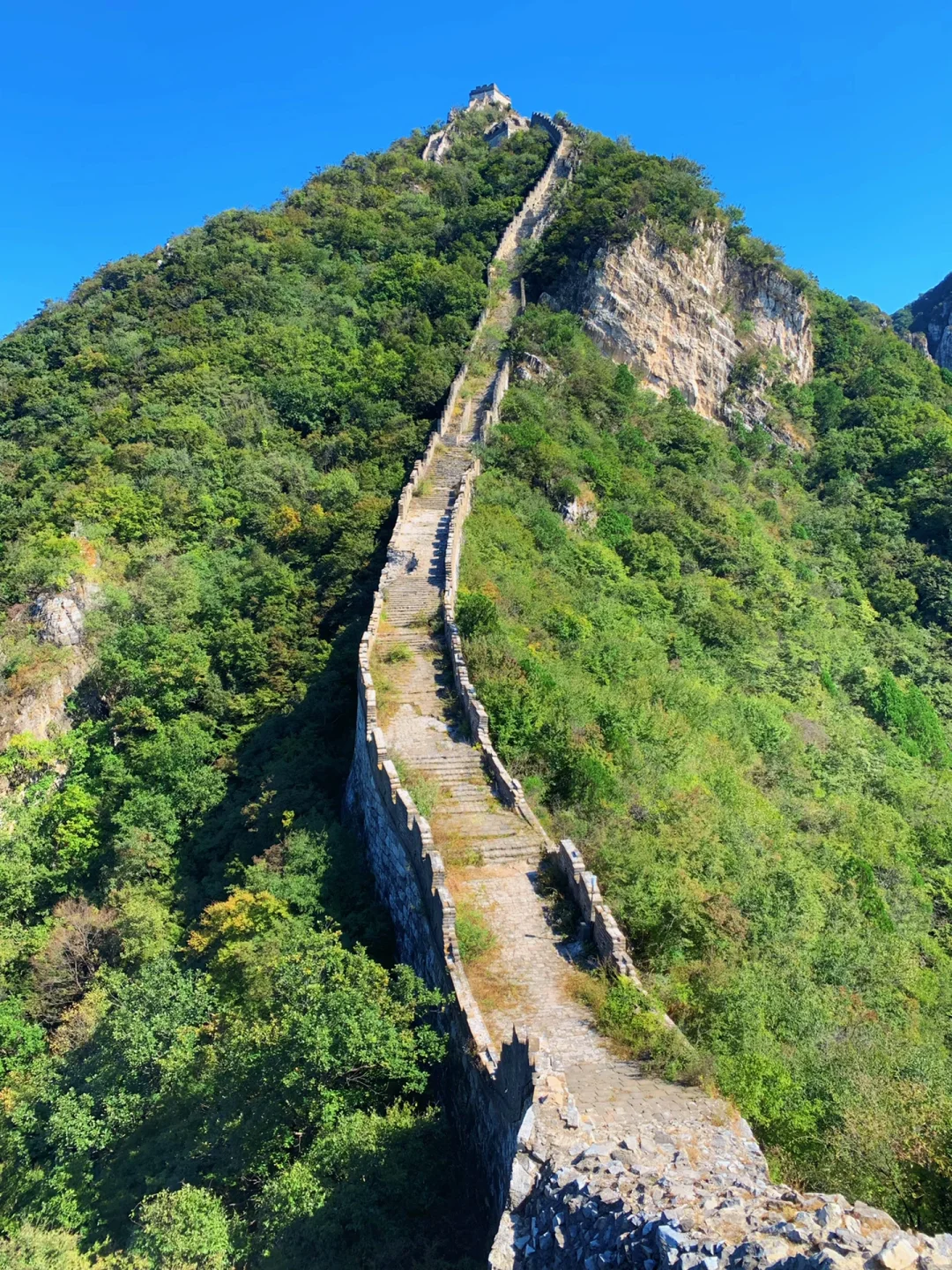
Jiankou
Jiankou Great Wall, renowned for its dramatic “W” shape resembling a drawn bow, is the wildest and most adventurous section of Ming Dynasty Great Wall. This unrestored stretch offers breathtaking cliffs and raw beauty, attracting experienced hikers seeking thrilling challenges and unparalleled views.
Which Section of the Great Wall Is Best To Visit?
Each section of the Great Wall is unique and has beautiful views, so you’re sure to have a great time visiting! Which section you should visit is ultimately up to you and the experience you want.
| Great Wall Section | Features | Best For | Difficulty | Unique Experience | Crowd Level | Restoration | Cable Car | Time Needed |
|---|---|---|---|---|---|---|---|---|
| Badaling | Most famous & Easiest Transportation | First-time visitors | ★★☆ | Most iconic & complete | ★★★★★ | Restored | Yes | Half day |
| Mutianyu | Scenic & well-equipped | Families | ★★★ | Toboggan ride & cable cars | ★★★☆ | Restored | Yes | Half day |
| Simatai | Only night tour & wild section | Night photography | ★★★★ | Only night-lit section | ★★☆ | Wild | Yes | A day |
| Juyongguan | Circular fortress with temples | Culture lovers | ★★★ | Circular wall with ancient temples | ★★☆ | Restored | Yes | Half day |
| Huanghuacheng | Only lakeside section | Scenic relaxation | ★★☆ | Lakeside & underwater wall | ★★☆ | Partly restored | No | A day |
| Jinshanling | Most photogenic | Hikers/photographers | ★★★★ | 10.5km continuous wall | ★★☆ | Part restored / part wild | Yes | Half day |
| Jiankou | Most adventurous wild wall | Expert hikers | ★★★★★ | Untamed “wild wall” adventure | ☆ | Unrestored (wild) | No | A day |
For families with kids, Mutianyu is the perfect choice with its cable cars and fun toboggan ride. First-time visitors will love Jinshanling’s photogenic watchtowers, while photographers shouldn’t miss Simatai’s night views. Experienced hikers can challenge Jiankou’s wild terrain, and repeat visitors will enjoy Huanghuacheng’s unique lakeside walls. Avoid crowded Badaling on weekends.
Which season is the best to visit the Great Wall?
The Great Wall offers breathtaking views year-round, with each season showcasing its unique charm. While any time is worthwhile for a visit, choosing the right season can enhance your experience based on preferred activities and scenery.
The Great Wall offers breathtaking views year-round, with each season showcasing its unique charm. While any time is worthwhile for a visit, choosing the right season can enhance your experience based on preferred activities and scenery.
Spring (April–May) brings pleasant weather (10–20°C) and blooming flora, though mountains may still appear brown in early spring.
Summer (June–August) is lush but hot (30°C+), requiring sunscreen and extra water.
Winter (December–February) offers snow-dusted views but icy paths; some cable cars/toboggans may close.
How to Get to the Great Wall from Beijing
Most Great Wall sections are located 60-130km (40-80 miles) from central Beijing. Visitors can access them via public transportation, organized tours, or private car hire. Badaling and Mutianyu are easiest to reach by bus/train, while remote sections like Jiankou require private transport. Tour packages often provide the most convenient option for first-time visitors.
| Great Wall Section | Transportation options | Time required |
| Badaling | High-Speed Train, Tourist Bus, City Bus, S2 Train | 30 min – 3 hours |
| Mutianyu | Tourist Bus, City Bus | 1.5 – 3 hours |
| Simatai | Tourist Bus, S5 Train | 2.5 – 3.5 hours |
| Jinshanling | S5 Train, Tourist Bus, City Bus | 2 – 3 hours |
| Juyongguan | Tourist Bus, City Bus | 1.5 – 2 hours |
| Huanghuacheng | Tourist Bus, City Bus | 2 – 3 hours |
| Jiankou | City Bus | 2.5 – 3.5 hours |
Beijing Great Wall Maps
The Great Wall in Beijing stretches 520.77 kilometers across six districts from east to west: Pinggu, Miyun, Huairou, Yanqing, Changping, and Mentougou. Along its length lie famous sections like Badaling, Mutianyu, Gubeikou, Simatai, Shentangyu, and Yanhecheng, many of which have become world-renowned tourist destinations. Below is a tourist map of the Beijing Great Wall.
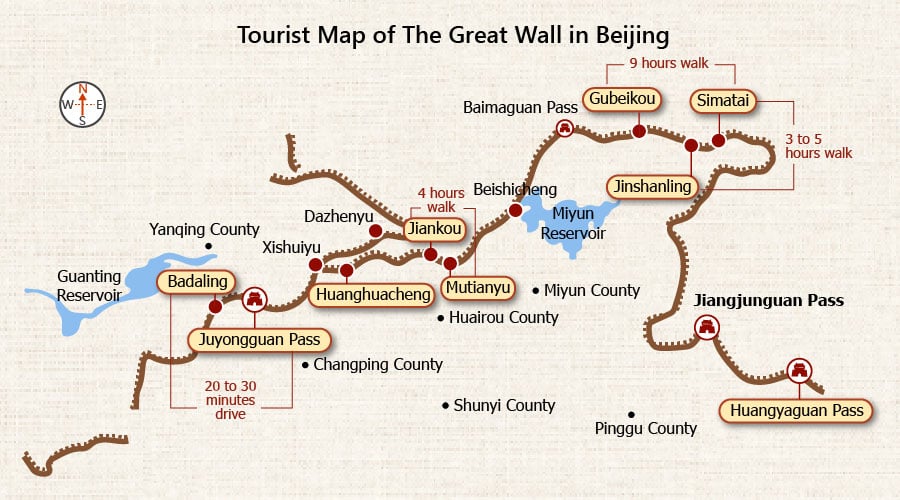
Related Knowledge About The Great Wall
Where is the Great Wall of China Located?
The Great Wall locates across northern China, extending from Shanhaiguan on the Bohai Bay in Hebei Province to Jiayuguan in Gansu Province’s inland region. Spanning 15 provincial-level regions including Hebei, Beijing, Tianjin and others, most of the Qin Dynasty walls have disappeared after 2,000 years of natural erosion. What tourists visit today primarily refers to the well-preserved Ming Dynasty sections located in and around Beijing. These Ming portions represent the iconic Great Wall experience that attracts visitors worldwide.
How Long is the Great Wall of China?
The Great Wall of China stretches 21,196 km (13,170 miles) in total length, according to China’s 2012 archaeological survey. This includes walls, trenches, and forts built across multiple dynasties. The best-preserved Ming Dynasty sections account for 8,851 km (5,500 miles), while the rest are eroded remains from earlier eras. In Beijing, 573 km (356 miles) of the Wall remains, with over 40 km (25 miles) restored for visitors. Though traditionally called the “Ten-Thousand Mile Long Wall” in Chinese, its actual length equals about half the Earth’s equator!
When was the Great Wall of China Built?
The Great Wall of China is the world’s longest-running defensive project, with construction spanning over 2,500 years from the Western Zhou Dynasty (1046–771 BC) onward. Various dynasties continuously built sections across northern and central China, eventually forming a network exceeding 20,000 kilometers in total length.
Why Was the Great Wall of China Built?
The Great Wall was built over centuries primarily for defense, starting as early as the 7th century BC when warring states constructed walls against each other. After unifying China, Qin Shi Huang connected these walls (214-204 BC) to defend against northern nomads. Later dynasties expanded it for different purposes: the Han extended it to protect the Silk Road (201 BC-8 AD), while the Ming built the most visible sections (1368-1620 AD) to resist Mongol invasions. Beyond military use, it secured trade routes and stabilized China’s agricultural society. Today, it serves as a cultural symbol and tourist attraction.
Who Built the Great Wall of China?
The Great Wall was built by millions of workers across different dynasties over 2,300 years. Its construction began during the Zhou Dynasty (7th century BC) when states like Chu built defensive walls. After unifying China, Qin Shi Huang (221-206 BC) connected these walls using soldiers, peasants, and prisoners – many died during this massive project. Later dynasties continued expanding it: Han emperors extended it westward to protect the Silk Road, while Ming generals rebuilt Beijing’s sections. The labor force included conscripted farmers, convicts, and troops working with local materials. Though often credited to emperors, the Wall truly stands as a testament to countless unnamed builders’ collective effort.
Who Designed the Great Wall of China?
The Great Wall’s design evolved over centuries without a single architect. Early designers from Warring States periods (475–221 BC) were unnamed craftsmen, their records lost when Qin burned history books. Later dynasties followed existing styles, with Ming Dynasty renovations directed by Emperor Zhu Di and General Qi Jiguang. Construction was decentralized, with each section built by local teams adapting to terrain, making the Wall a collective masterpiece of anonymous engineers.
How Tall is the Great Wall of China?
The Great Wall’s height varies by section, averaging 5-8 meters (16-26 feet) where preserved—designed to triple a soldier’s height. Some strategic flatland portions reach 14 meters (46 feet), while mountainous segments appear taller by following ridges. Its highest point stands at 1,439 meters (4,722 feet) above sea level. The structure combines walls, watchtowers, and fortresses for layered defense.
How was the Great Wall of China Built?
The Great Wall was built through remarkable adaptation to diverse terrains (mountains, deserts, etc.), using local materials like stone and bricks. Construction was organized in sections, with armies and peasants working under decentralized management. Workers employed ingenious methods to transport materials: passing bricks hand-to-hand up ridges, using simple machines (ropes, winches), and even loading goats with baskets. The Ming Dynasty’s Badaling section alone required thousands of laborers per segment. While emperors planned the Wall, its execution relied on countless unnamed soldiers and workers, many of whom perished during its arduous construction.
How Big is the Great Wall of China?
The Great Wall of China spans 21,196 km (13,170 mi) in total length, with Ming Dynasty sections preserving 8,851 km (5,500 mi). Its walls average 7.8m (26ft) tall (up to 14m/46ft) and 4-5m (13-16ft) wide atop, broadening to 6.5m (21ft) at the base. The highest point reaches 1,439m (4,722ft) at Huanglouwa.